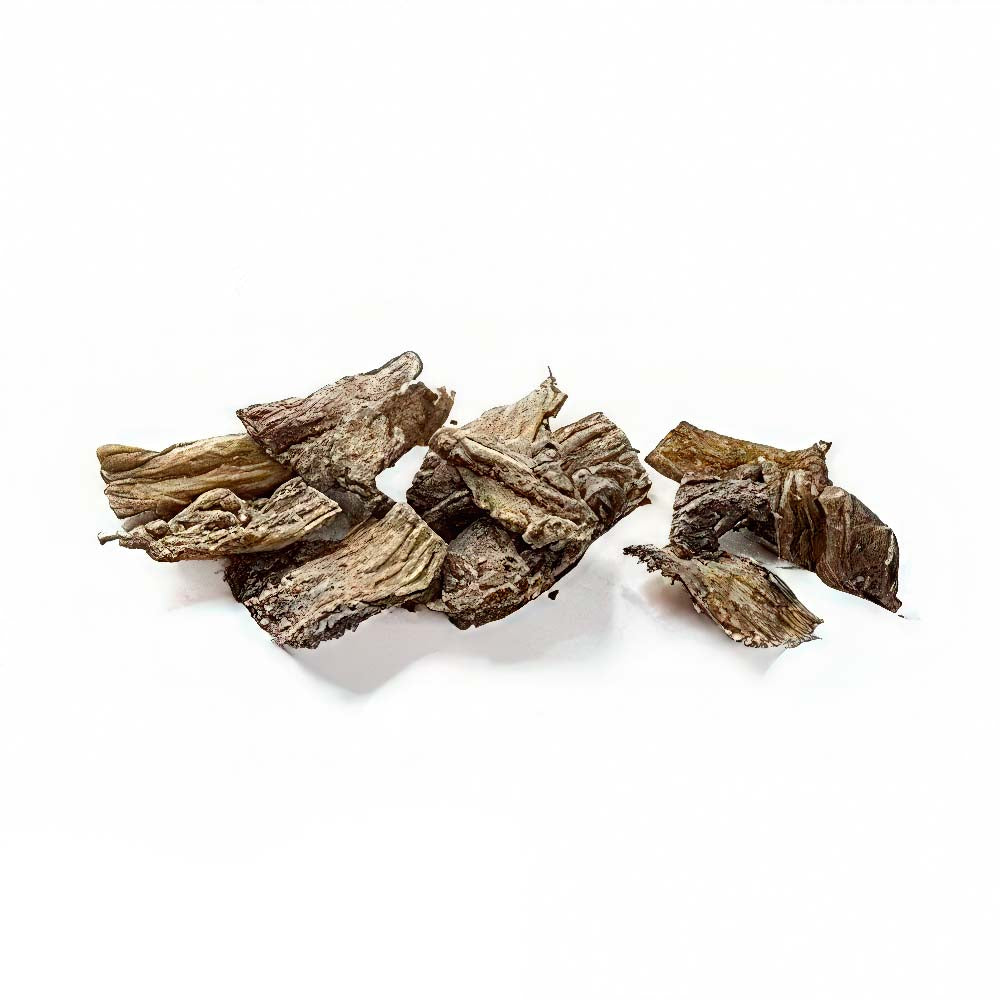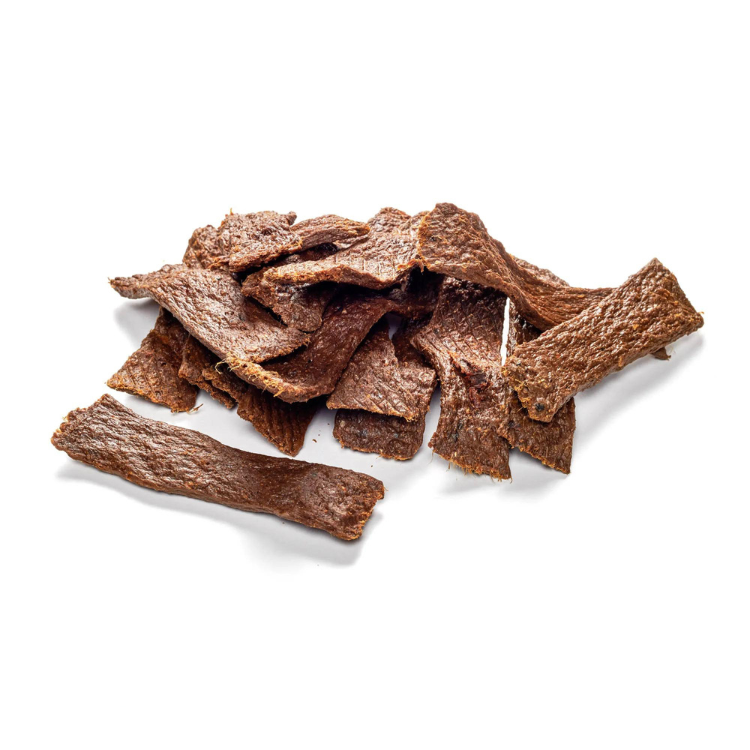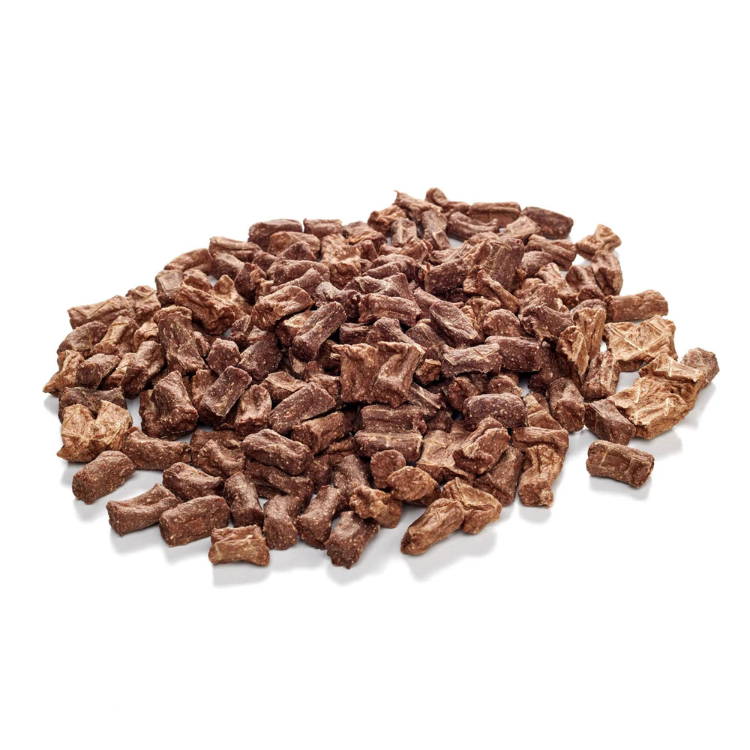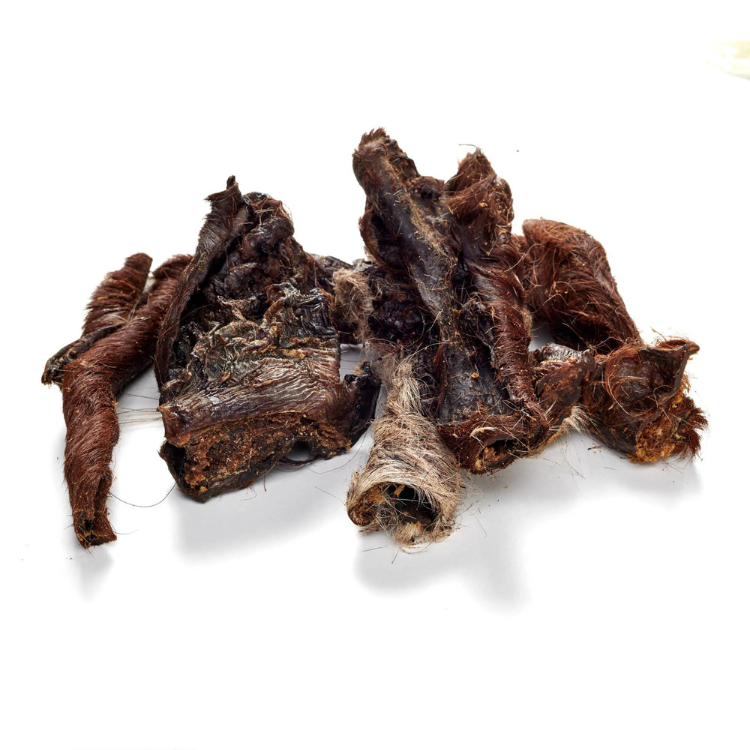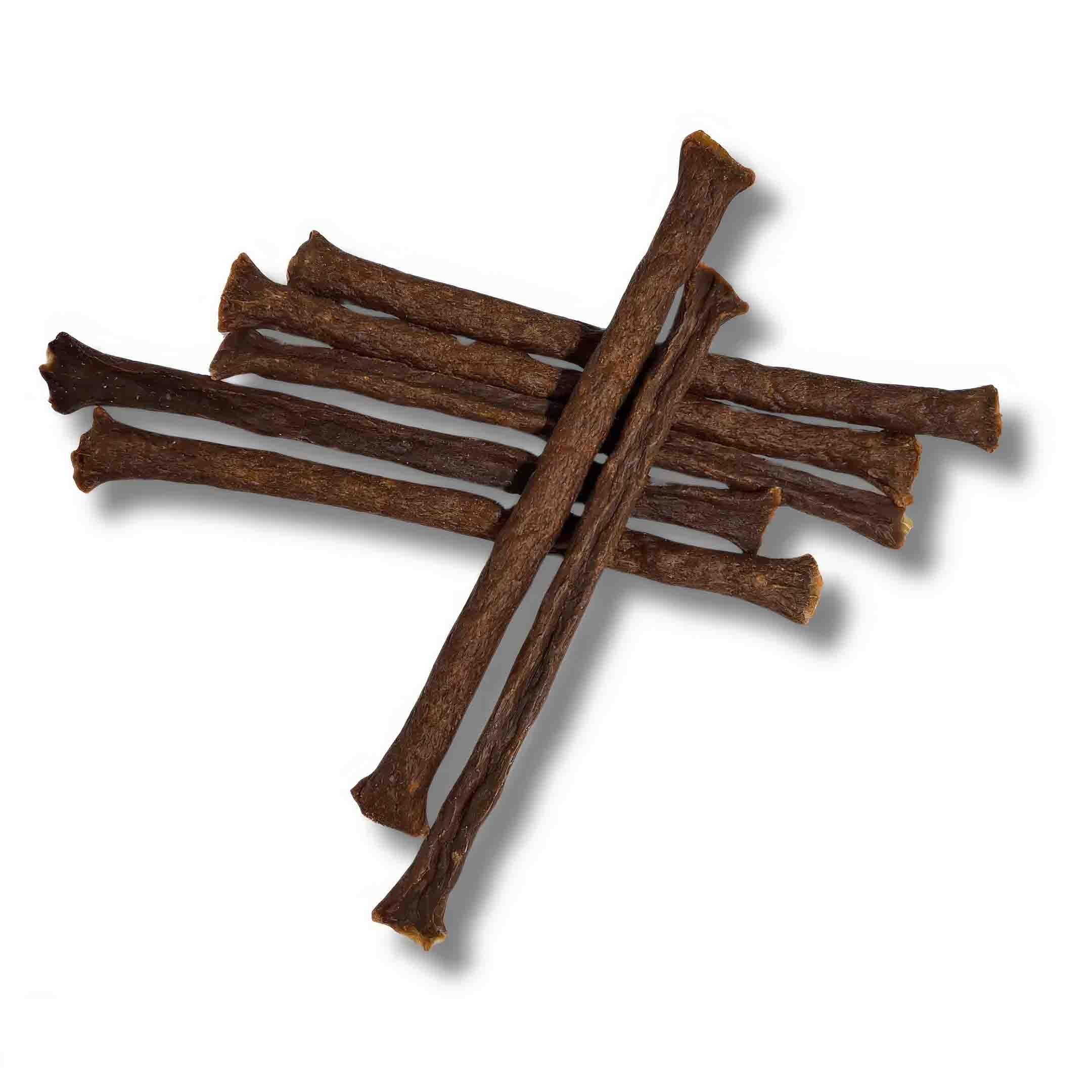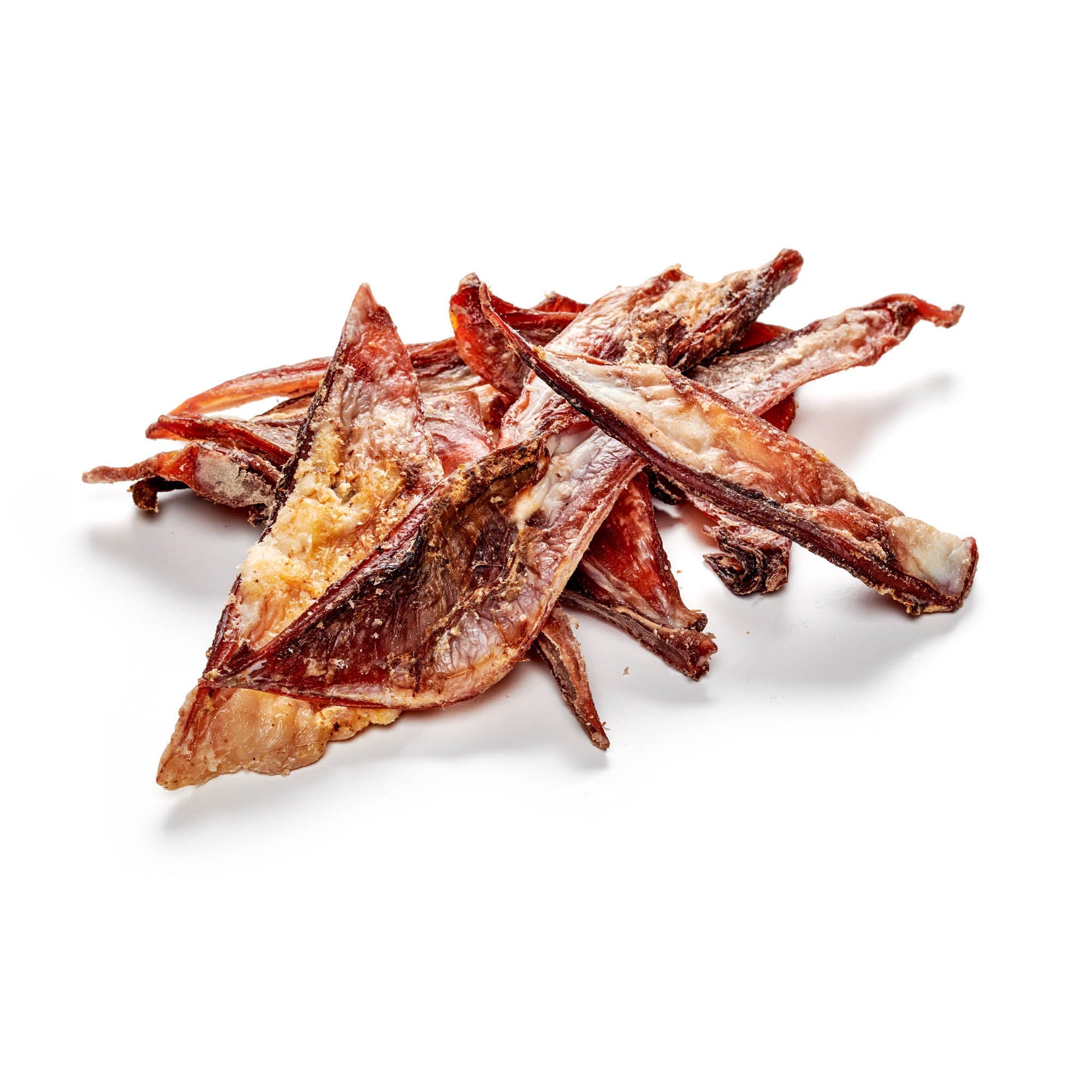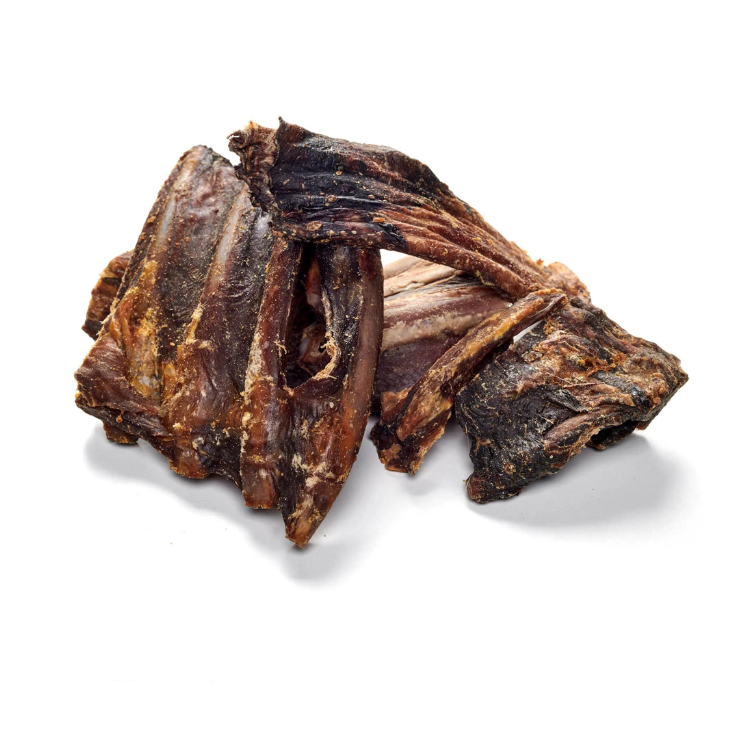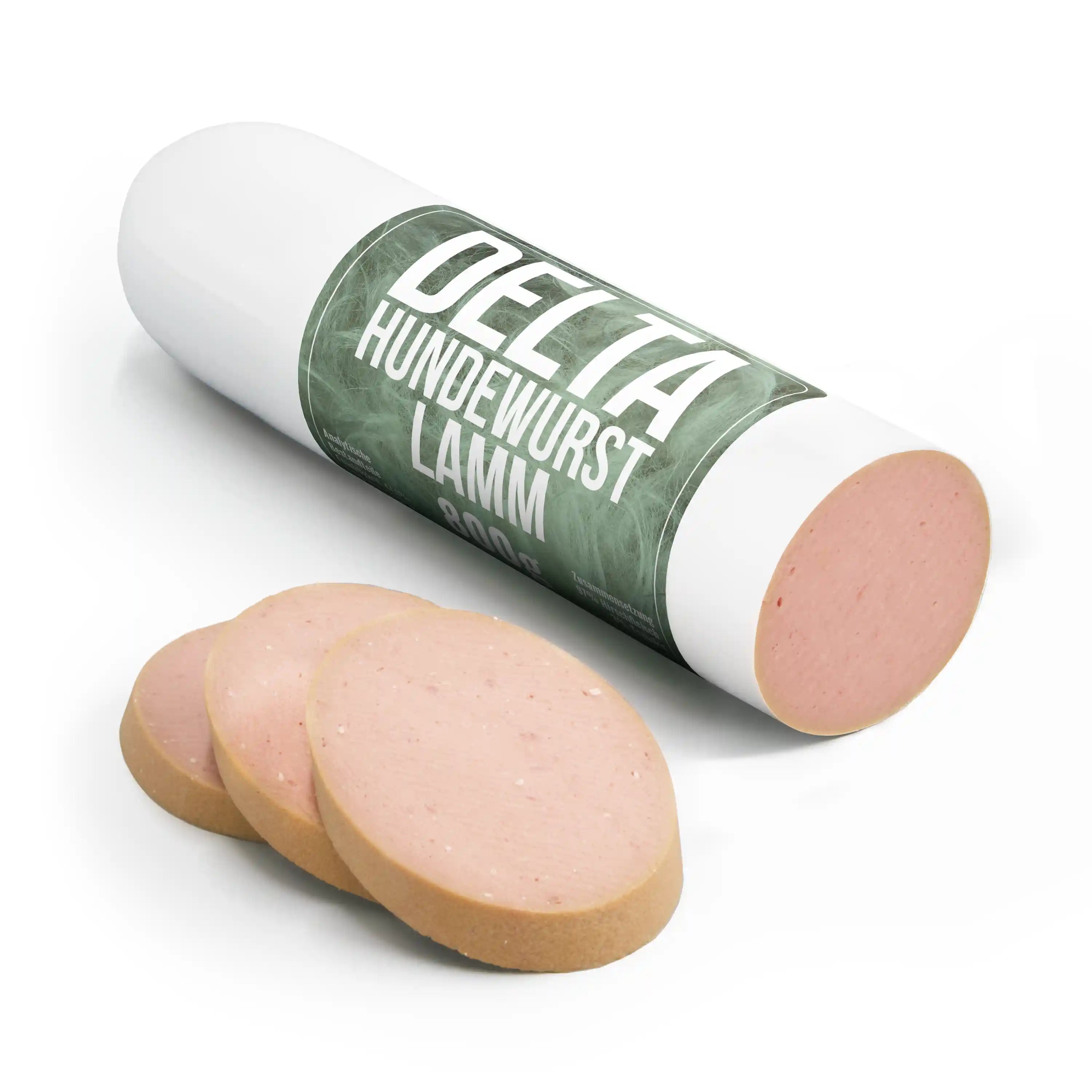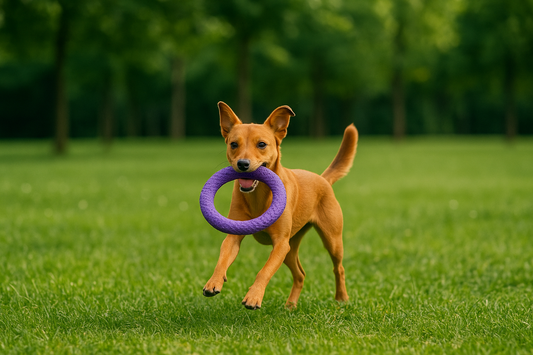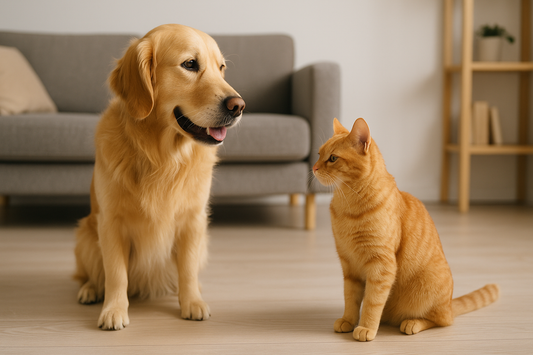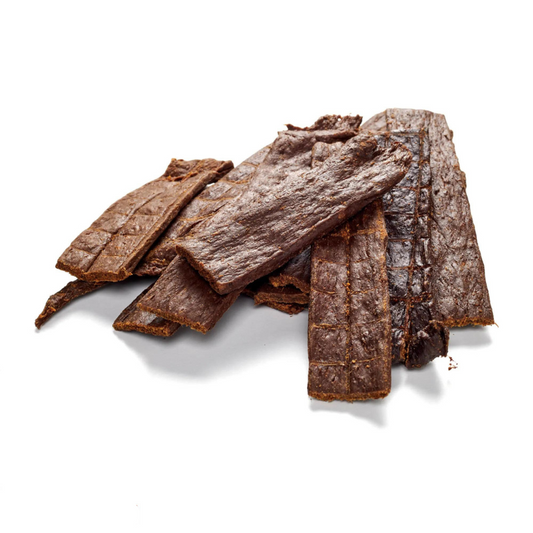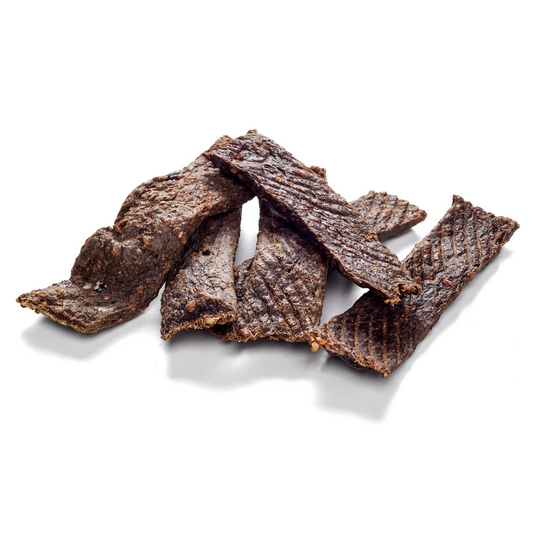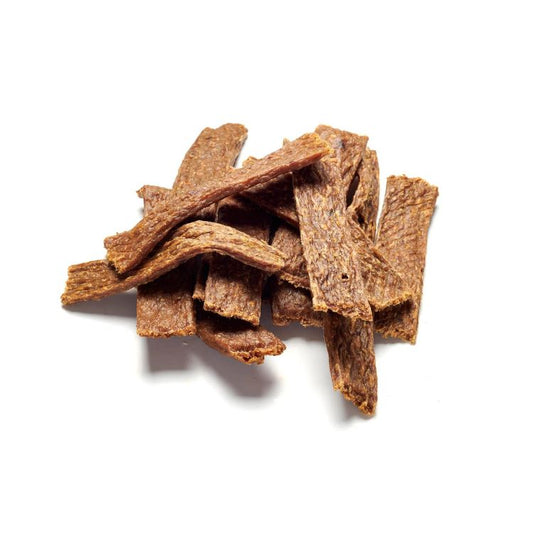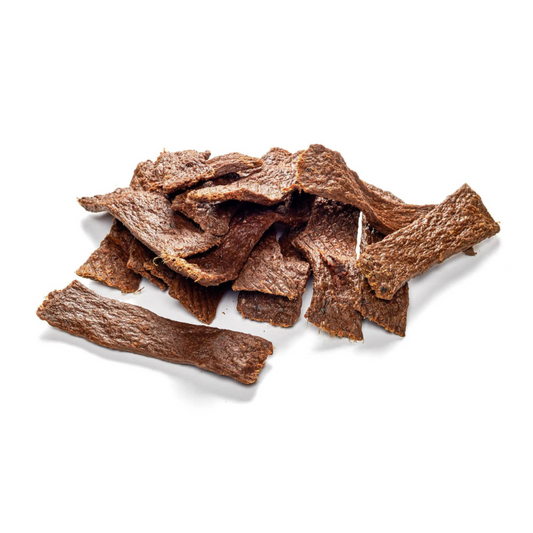
German Longhair
Share
The German Longhaired Pointer is a balanced and calm hunting dog that is very popular with hunters. His balanced temperament and excellent tracking skills make him a reliable partner.
Content: German Longhair
- profile
- Special features
- Nutrition
- Health and care
- Origin & History
- The right accessories
- Conclusion
Pamper your dog with our delicious chews!
German Longhair - Profile
- Character: Friendly, Balanced, Gentle
- Size: Large
- Height: 58-70cm
- Weight: approx. 30 kg
- Life expectancy: 12-15 years
- Coat type: Long hair
- Colour: Brown, brown-white, brown-roan
- FCI Group: Pointing Dogs
German Longhair - Special characteristics
The German Longhaired Pointer, which can grow up to 70 cm tall and weigh 32 kg, is a pointing dog and is therefore one of the larger dog breeds. Female dogs are generally a little lighter and smaller. These hunting dogs are specialized in following the trail of wild animals and, as soon as they have found them, pointing at them with their snouts and keeping still. In English, they are therefore also called “pointers.” These dogs are also good at retrieving and reliably bring the prey back to their owners. They are considered all-rounders in the hunting business.
>The strong German Longhairs are extremely muscular, even if it doesn't seem that way at first glance. They appear rather elegant, which is probably due to their medium to long fur, which protects their bodies well from the elements.
Its color is usually brown, brown and white, and brown-roan can also occur. Its most striking trademark is its floppy ears, which, with their long, wavy hair, are reminiscent of two braids. The tail is also heavily haired.
The light brown eyes express alertness and intelligence and they are always looking for something to do. Preferably in the form of prey. Interested dog owners should be aware of this. This breed of dog is a hunting dog and needs corresponding tasks or balance in the form of dog sports or plenty of long walks and hikes. This versatile hunting dog then becomes a promising family dog that also gets on well with children. But in this respect it cannot be compared to, for example, a Golden Retriever . The German Longhaired Pointer is and remains a working dog whose upbringing and daily training may be a little too demanding for dog novices. Especially if there are children to look after. This strong-willed dog needs an experienced and calm caregiver who will carry out the training with consistency and patience. This takes a lot of time and only those who have that time should get a German Longhaired Pointer.
However, for some people this breed of dog is perfect and with the right training the German Longhaired Pointer will be a calm, peaceful and self-confident companion.
German Longhair - What should be considered regarding nutrition?
A dog breed that was bred for hunting and is large and strong like the German Longhaired Pointer naturally needs a protein-rich diet. Of course, this always depends on the daily stress and the individual needs and phases of life.
The portions should be small but nutritious. Proper nutrition is essential, especially when the dog is used for hunting. It is recommended that the meal be served around three hours before the hunt or a similar activity. This gives the dog enough time to digest the food it has eaten. If dogs start exercising again too soon after eating, the risk of gastric torsion increases dramatically. This is not only painful and expensive, but can also be fatal!
Dry or wet food is a decision that dog owners have to make for themselves. It is important that the dog food you choose is high quality, balanced and healthy. It should be free of artificial additives and sugar.
It should also be adapted to your dog's needs and take possible allergies into account. Since this breed of dog tends to be overweight, its weight should be checked regularly.
Pamper your dog with our delicious chews!
German Longhair - Health and Care
Since the German Longhaired Pointer has a magnificent coat, as its name suggests, it is important to brush it regularly. This removes loose hair, leaves or small twigs that quickly get caught in this magnificent coat. Without daily grooming, its coat quickly becomes matted. There are dog bathrobes for wet dogs, and they are actually very helpful, especially for dogs with long fur.
Ear hygiene is also important for dogs with floppy ears. Since the ear canals are always covered, not enough fresh air can circulate. This can lead to painful middle ear infections. To prevent this, you should clean the ears regularly. To ensure this is successful, it should ideally be started when the dog is young. The eyes and paws also need to be cleaned. The latter are particularly stressed in winter with all the road salt and benefit from occasional treatment with paw balm. This prevents the paws from tearing and ultimately becoming infected. The spaces between the individual claws should also be checked and cleaned. In tick season , tick protection and daily checking are important because the small arachnids can transmit deadly diseases!
The same applies to all other parasites, for which there are various means of deterring them. It certainly doesn't hurt to consult your veterinarian here, as regional conditions also influence what makes sense for your dog or not.
Since the German Longhaired Pointer needs a lot of exercise, it is important to give him enough space to run around and keep him busy. In addition to physical activity, he also needs mental challenges such as tracking or intelligence games . A happy and healthy dog is the result of sufficient exercise and mental stimulation.
German Longhaired Pointer - Origin & History
The German Longhaired Pointer is a descendant of the Bracke, which is still found in many hunting dogs today, such as the German Bracke. The history of the German Longhaired Pointer therefore stretches back far into the Middle Ages.
In addition to the Bracken, Spaniel-like dogs are among its ancestors. This breed of dog has been bred in Germany since 1878. Over time, the breed has developed from a pure pointer to an all-round hunter, making them one of the most popular hunting dogs there is.
In order to maintain high breeding standards, breeders must pass a test by the Hunting Dog Association with their dogs before they are approved as breeders. The FCI has also recognized the dog breed since 1954.
German Longhaired Pointer - The right accessories
The basic equipment for dogs includes at least one leash, but preferably two leashes of different lengths and perhaps a third as a reserve. Also a collar or harness, water and food bowls and a good dog bed .
If you are travelling with your dog in the car, you should get a dog transport box. This also applies to air travel. For train travel, you will need a muzzle and, given the size of this breed of dog, a train ticket.
Dog lovers with a garden will certainly be happy if they can let their dog run around freely. To ensure that things remain relaxed not only for you, but also for the neighbors or the postman, a dog fence may be a good idea.
For fun and games, retrieving bones or tracking games are useful.
Conclusion
As beautiful and remarkable as the German Longhaired dog breed is, it is unfortunately not suitable for every household. Only those who have enough time and perhaps even want to work with the dog should seriously consider getting a German Longhaired. However, those who have already gained experience with dogs and their training or are seriously interested in it will find in this dog breed a great four-legged friend with all-round skills and lots of energy.
Pamper your dog with our chew products!

